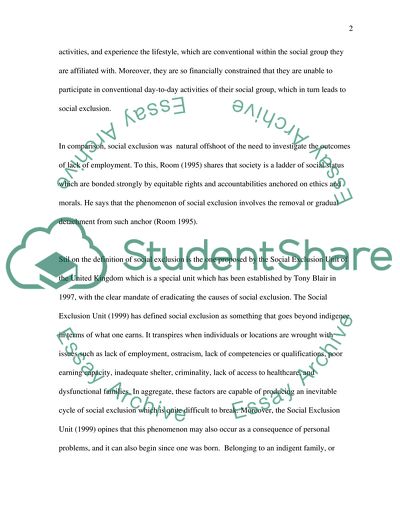Cite this document
(What do you understand by poverty and social exclusion and what is Research Paper, n.d.)
What do you understand by poverty and social exclusion and what is Research Paper. Retrieved from https://studentshare.org/social-science/1719912-what-do-you-understand-by-poverty-and-social-exclusion-and-what-is-their-significance-for-social-work-practice
What do you understand by poverty and social exclusion and what is Research Paper. Retrieved from https://studentshare.org/social-science/1719912-what-do-you-understand-by-poverty-and-social-exclusion-and-what-is-their-significance-for-social-work-practice
(What Do You Understand by Poverty and Social Exclusion and What Is Research Paper)
What Do You Understand by Poverty and Social Exclusion and What Is Research Paper. https://studentshare.org/social-science/1719912-what-do-you-understand-by-poverty-and-social-exclusion-and-what-is-their-significance-for-social-work-practice.
What Do You Understand by Poverty and Social Exclusion and What Is Research Paper. https://studentshare.org/social-science/1719912-what-do-you-understand-by-poverty-and-social-exclusion-and-what-is-their-significance-for-social-work-practice.
“What Do You Understand by Poverty and Social Exclusion and What Is Research Paper”, n.d. https://studentshare.org/social-science/1719912-what-do-you-understand-by-poverty-and-social-exclusion-and-what-is-their-significance-for-social-work-practice.


